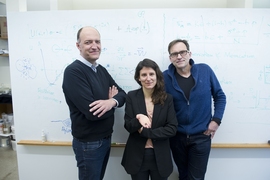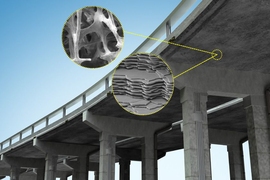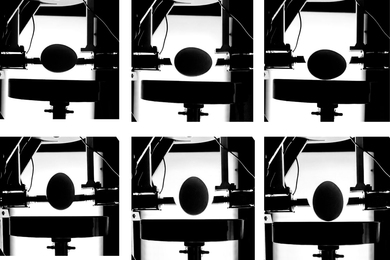What elements determine how much impact a building has on the environment? If things like roofing, insulation, and energy-efficient windows are among the first things that come to mind, you’re not wrong — but you also don’t have the complete picture. Unfortunately, decision-makers, including architects and builders, may not always have the full picture up front either.
While there have been promising advances in building methods and technologies designed to increase energy efficiency and lower the environmental impact of buildings, most building codes and energy efficiency standards address just the use phase of the building — this could inadvertently encourage manufacturing activities with higher long-term environmental impacts.
“Buildings are complex,” says MIT Professor Jeremy Gregory, executive director of the MIT Concrete Sustainability Hub (CSHub). “To understand the full environmental impact of a structure over decades of use, all phases — starting before construction and continuing on to the very end of the structure’s life — must be considered.”
A new report from the CSHub entitled “Critical Issues When Comparing Whole Building and Building Product Environmental Performance” addresses important concepts in quantifying the environmental impact of buildings and the products that comprise them. The report also makes recommendations for current and future building practices using life cycle assessment (LCA) and offers suggestions for research to advance future study and practice in this area.
“One of the key takeaways is that there are many factors that must be considered before evaluating claims that one or another building type or product offers a better environmental return,” says Gregory, who is one of the authors of the new report. “Decision-makers must take a life-cycle perspective when evaluating impacts. One material may have a higher impact at the outset but result in a much lower impact across a structure’s lifespan.”
Building sector guides, product category rules, and environmental product declarations that use LCA to evaluate environmental impacts, including guidelines set forth by the leadership in energy and environmental design (LEED) rating system, have certainly moved the industry forward. However, the prevailing methods have limitations; for example, they lack consistency in their approach, and they do not allow whole buildings or even building products to be compared against alternatives.
“The ability to compare one building type to another, or one product choice with another, is extremely important so that decision-makers fully understand the benefits or consequences of shifting building designs and technologies,” said Gregory.
This report, like past CSHub research (including a 2011 Building LCA report), advocates for the development of a standardized buildings LCA framework, which researchers feel is essential in order to increase the accuracy of the LCA approach. It also adds a call for comparability. The new research is part of ongoing work by the CSHub, which has undertaken a series of projects quantifying the full life cycle impacts of buildings. The team also published a revised literature review and gap analysis on the topic earlier this month.
“There is significant inconsistency in the way that many life-cycle assessment studies consider, or in some cases ignore, the life-cycle stages of buildings,” said Randy Kirchain, co-director of the CSHub and principal research scientist in the Materials Systems Laboratory. "This report tries to highlight where inconsistencies often are found and identifies best practices to address those aspects of buildings LCA.”
Kirchain added, “Work both here at the hub and by many other LCA experts has made it clear that without a full life-cycle assessment, the picture is incomplete.”
MIT Concrete Sustainability Hub research is supported by the Portland Cement Association and the Ready Mixed Concrete Research and Education Foundation.









